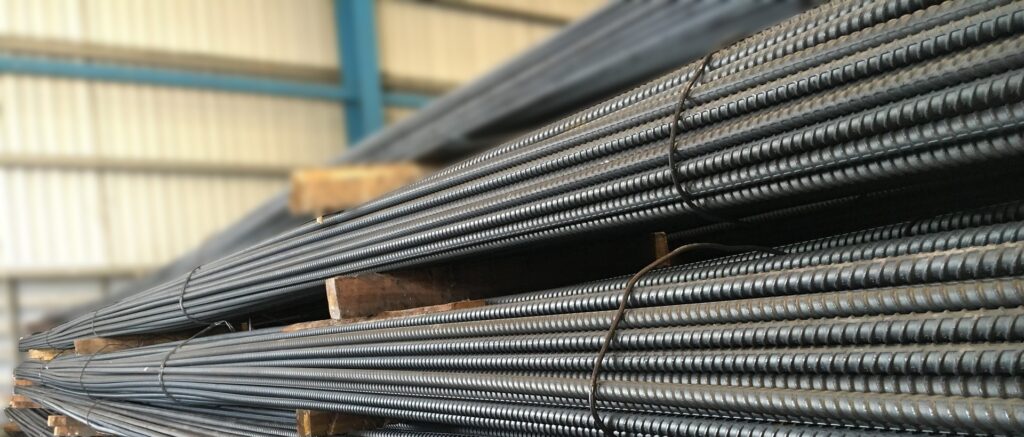Industries that Directly Influence Performance of the Hardware Distribution Industry

The hardware distribution industry is not a standalone industry existing in its own bubble. Instead, there are several influences from the market that have a direct impact on the performance of this industry. The most predominant of these include performance of the building and construction sector and the Ugandan economy.
There is a strong link between the hardware distribution industry and the building and construction sector mostly because hardware is the main input in the construction process. The implication of this is – if construction and infrastructural developments are thriving in the economy, the demand for building and construction materials increase. This spirals into an increase in the role played by distributors.
“There is a strong link between the hardware distribution industry and the building and construction sector”
In Uganda, the construction sector is a major driver for economic growth and job creation due to heavy investment in several infrastructural projects. Currently the most prominent projects include the 600MW Karuma and 183MW Isimba hydro projects. It should also be noted that discovery of oil in Uganda has created demand for construction related activities such as building connection roads, building of an oil refinery and so much more. Additionally, NSSF is increasingly committing more of its portfolio to several infrastructural developments.
Mismatch Between Supply and Demand
Despite the positive outlook, there has not been enough demand to meet the increasing supply of mostly commercial buildings. Supply of commercial real estate had increased due to expectations by the newly discovered oil sector to attract occupants from interested foreign investors. This has not been the case due to delays in granting approvals to oil companies like Total and Tullow Oil to undertake field developments. The resultant effect is a real estate market that is characterised by commercial buildings having low occupancy rates.
This trend signifies that property owners are most likely to drive down prices in an attempt to fill up empty spaces. Indeed, rents for commercial spaces have dropped from highs of $15-16.5 per square meter in some properties to $12. Forest mall has even gone as far as reducing its asking price to $10 per square meter.
Despite the slump in commercial real estate there are other influential factors that have kept the sector thriving. These include increase in residential construction activities during the festive season as well as greater demand for iron sheets from farmers during harvest. Furthermore, Uganda has the second youngest population in the entire world-with 55% of the population below the age of 18. The construction sector is likely to benefit from this in the following ways:
“…Uganda has the second youngest population in the entire world…”
- There is bound to be an increase in demand for institutional structures like schools and hospitals.
- Also, there is guaranteed to be a population explosion in the working age group over the next few years– this will most likely increase demand for residential units.
Influence from the Economy
Financial difficulties at the beginning of 2017 have prompted Bank of Uganda to revise the expected growth rate for the year to 4.5%. This stands as a reflection of anticipated slowed growth in the key sectors of the economy including the construction sector.
Inflation
Overall, Uganda’s core inflation remained above the headline inflation for most part of 2016. Data from Bank of Uganda shows that between 1998-2006, inflation rates averaged 6.63%. The chart below shows monthly headline and core inflation rates for 2016.
Despite reduction in the inflation rate illustrated by the chart above, the figures are still above Bank of Uganda’s target to hold annual core inflation at 5%. High inflation rates have a negative impact on profitability of this industry mostly because margins are very small, and consumers are price sensitive.
Interest Rates
The first two quarters of 2016 were marked by increasing economic hardship due to uncertainty brought about by the February elections. A central bank rate of 17% in January for example forced commercial banks to maintain their lending rate between 24-25%. This made borrowing extremely difficult for businesses and eventually slowed down growth. To counter this, the central bank has made it a point to continuously reduce the CBR. As at February 2017, the CBR was 11.5 %. This action shows that Bank of Uganda is committed to using monetary policy tools to improve the economy.
“…commercial banks…lending rate between 24-25%…made borrowing extremely difficult for businesses and eventually slowed down growth.”
Despite this push, many are questioning whether the persistent reduction in the CBR is having any impact on the performance of the economy. There seem to be multiple factors beyond the control of the central bank that influence rates. A Recent report published by the Daily Monitor revealed that Non-Performing Loans have increased to 10.5%. Commenting on this, the central bank pointed out that, “The rise in Non-Performing Loans is likely to increase the risk aversion amongst lenders and consequently weaken private sector credit growth going forward.” This shift could negatively affect already fragile growth prospects.
Exchange Rates
Additionally, the Hardware Distribution industry is strongly affected by the value of the shilling. This arises because distributors and manufacturers import certain materials. A depreciating shilling causes the price of imported products to go up. Worse still, manufacturers are so powerful that if imported input prices go up, they increase their prices-meaning the burden is passed on distributors. Below is the USD to UGX Exchange rate as extracted from Bank of Uganda.
Drivers Of Industry Profitability
Industry profitability is hugely affected by industry forces such as the bargaining power of buyers, bargaining power of suppliers, threat of new entrants, availability of substitutes, and intensity of rivalry in the industry.
In order to understand the relative strength of industry forces in the hardware distribution industry, the ASIGMA research team dug deep into how firms interact with each of the five forces. The resultant discovery was that distributors in the Hardware Distribution industry are mostly faced with very strong industry forces in terms of high buyer and supplier power, as well as intense rivalry with competitors. On top of that, margins are very small making it nearly impossible to compete on the basis of price.
How Sharp Distributors Have Been Able to Counter Buyer Power
Successful distributors have realised that retaining customers involves giving them an unforgettable experience. In fact, successful distributors are not merely taking orders and distributing. They are involved with customers from the very beginning to the end through provision of pre-purchase consulting services and post purchase after sales services.
Distributors have also been able to diversify their product and service offering so that customers don’t have to seek the services of competitors. At Hardware World for example, certain customised components that are unavailable are sourced by the company on the customers behalf. Further, Hardware World plans to take the entire purchase process to another level by setting up an online shop. Through this, customers will be able to make orders remotely and have them delivered to a point of convenience. This has been made possible with the onset of mobile money and online banking.
“…Hardware World plans to take the entire purchase process to another level by setting up an online shop.”
The lesson from this is – innovating and constantly diversifying service offering goes a long way in not only getting an edge over competitors but also appealing to buyers and locking them to your business.
Seroma Ltd on the other hand has taken the customer experience to an industry level that none has been able to match. What Seroma does is set up an account for a customer to allow them to make deposits for future constructions. When the customer is ready to build a house, Seroma merely delivers the building materials. Customers have been attracted by this model mainly because even when they can’t afford to construct immediately, as is the case with most Ugandans, they can always contribute to accumulate funds for future construction. The implication of this is, from pre-purchase, customers find it convenient to be with Seroma.
Is It Possible to Neutralise Supplier Power?

Suppliers, especially cement manufacturers have a lot of power because there are two dominant suppliers, Tororo and Hima. As such, distributors are compelled to choose between these. Dealership cannot be given to a distributor who is distributing cement on behalf of the other competitor.
Further, even with a brand like Tororo, the coverage area of a distributor is restricted by the manufacturer. Manufacturers give out dealerships and restrict distributors to specific regions like Eastern, Central, Northern or Western Uganda. Even if a distributor wanted to, it would not be possible to distribute Tororo cement to the entire country.
“… even with a brand like Tororo, the coverage area of a distributor is restricted by the manufacturer.”
Cement manufacturers are generally very powerful and unless there is an industry shift that would come in and limit their influence, it is nearly impossible to completely neutralise their power. Distributors have mostly accepted this and instead tried to reduce the power of manufacturers for other products by simply creating their own version of the product. A case in point is Cheap Hardware Ltd in Kampala deciding to go beyond distribution to make their own ridges and supply to other distributors.
Biggest Threat Likely to Disrupt the Industry
“It is no longer a matter of if, but rather WHEN Dangote will enter the Ugandan market.”
While Tororo and Hima have a strong grasp and control of the cement market in Uganda, the situation is very unlikely to remain the same in the foreseeable future. One only has to look towards our neighbours Kenya and Tanzania to see how Dangote has been able to completely disrupt the market by driving down market prices and in so doing take a huge chunk of the market share. In Tanzania for example, Dangote was able to gain 22% market share after just two months of operations. It is no longer a matter of if, but rather WHEN Dangote will enter the Ugandan market.
The main reason for Dangote’s success is the penetration pricing strategy used by the firm. Dangote’s cement is 20%-40% lower than the price of competitors. In Kenya, a 50kg bag of Dangote’s cement is priced at $4.70 (UGX 16,200), in Tanzania it’s priced even lower at $4.50 (UGX 15,500). Currently a bag of cement in Uganda retails close to UGX 30,000.
“Dangote’s cement is 20%-40% lower than the price of competitors.”
One may indeed wonder how this relates to Uganda, well, while Dangote has been importing cement to Kenyan and Tanzanian markets from its plant in Ethiopia, the company has commissioned the set-up of a cement plant in Tanzania in order to facilitate supply to other East African nations such as Uganda. Just like it happened in Kenya and Tanzania, there is strong indication that entry by Dangote into the Ugandan market will completely disrupt the market and force cement prices down.
Once Dangote enters the market, distributors are very likely to question their current dealership terms and consider the new cheaper alternative. Obvious beneficiaries from this shift are looking to be distributors who have cement as one of their fast-moving items.





